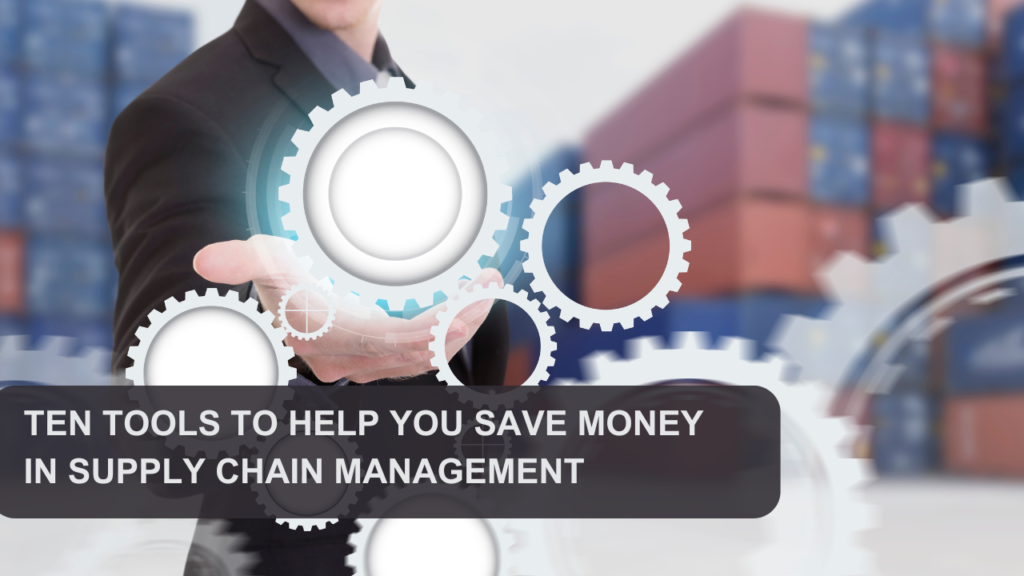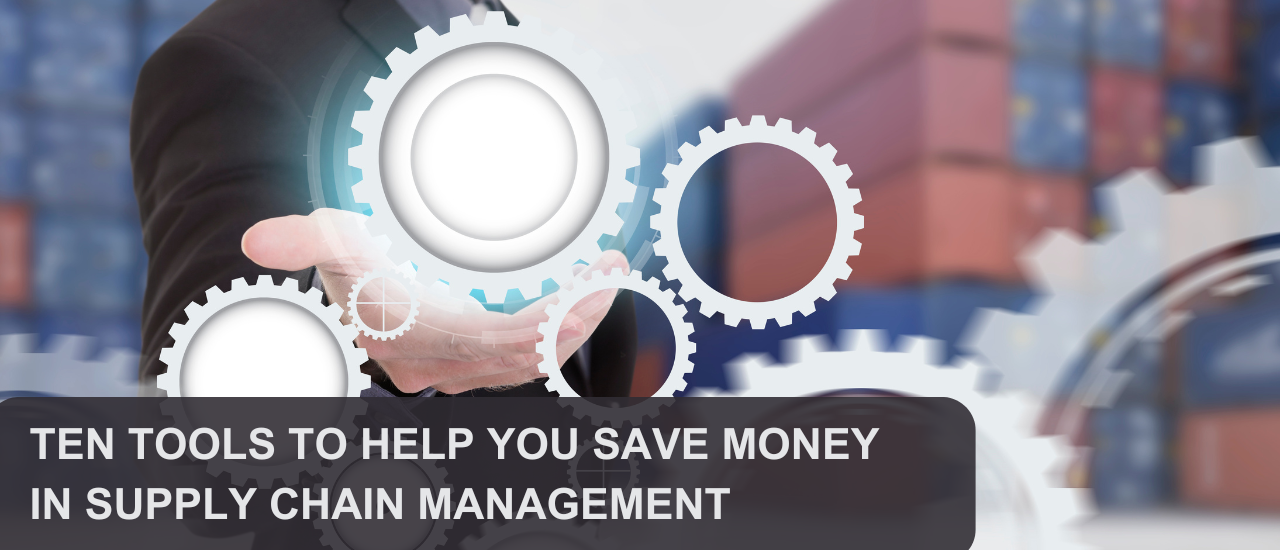Managing a supply chain can be a complex and costly endeavor, but with the right tools, you can streamline your operations and save money. Here are 10 tools that can help you optimize your supply chain and reduce expenses:

1. Inventory Management Software
Keeping track of your inventory levels is crucial to avoid overstocking or running out of products. Inventory management software allows you to monitor stock in real-time, set automatic reorder points, and generate reports to help you make informed decisions. For example, if you run an online store selling t-shirts, inventory management software can alert you when a particular color or size is running low, so you can reorder before it’s too late.
2. Warehouse Management System (WMS)
A WMS helps you manage the daily operations of your warehouse, from receiving and storing goods to picking and shipping orders. By using a WMS, you can improve productivity, reduce errors, and save on costs. Imagine you own a small furniture store. With a WMS, you can easily track the location of each piece of furniture in your warehouse, ensuring that orders are fulfilled quickly and accurately, reducing the need for costly returns or replacements.
3. Demand Forecasting Tools
Accurately predicting future demand for your products is essential to avoid overstocking or stockouts. Demand forecasting tools use historical data and market trends to help you estimate future sales. For instance, if you manufacture seasonal products like winter coats, demand forecasting tools can help you anticipate spikes in demand during the colder months, allowing you to adjust production and avoid costly excess inventory.
4. Supplier Relationship Management (SRM) Software
Building strong relationships with your suppliers is key to ensuring a reliable supply of materials and negotiating better prices. SRM software helps you manage these relationships by tracking supplier performance, facilitating communication, and storing important documents. Imagine you’re a food manufacturer sourcing ingredients from multiple suppliers. SRM software can help you identify your most reliable and cost-effective suppliers, allowing you to consolidate orders and negotiate better terms.
5. Transportation Management System (TMS)
A TMS helps you optimize your transportation costs by selecting the most efficient routes and carriers. By using a TMS, you can reduce fuel expenses, minimize delays, and avoid costly shipping errors. For example, if you’re a retailer with multiple stores, a TMS can help you plan delivery routes that minimize mileage and ensure that each store receives its shipment on time, reducing the need for expedited shipping.
6. Barcode Scanning Technology
Barcode scanning technology helps you track inventory and reduce errors throughout your supply chain. By using barcodes to identify and locate products, you can streamline processes like receiving, picking, and shipping. Imagine you run a small electronics store. By using barcode scanning to process incoming shipments and fulfill orders, you can reduce the time and labor required for these tasks, saving money in the long run.
7. Artificial Intelligence (AI) and Machine Learning
AI and machine learning can help you optimize various aspects of your supply chain, from demand forecasting to route optimization. By analyzing large amounts of data, these technologies can identify patterns and make predictions that help you save money. For instance, if you’re a manufacturer of consumer goods, AI can help you anticipate changes in consumer behavior and adjust production accordingly, reducing the risk of overproduction or stockouts.
8. Blockchain Technology
Blockchain technology can help you improve transparency and traceability in your supply chain, reducing the risk of fraud and errors. By using a decentralized, secure ledger to record transactions, blockchain can help you track the movement of goods and ensure compliance with regulations. Imagine you’re a food retailer concerned about food safety. By using blockchain to trace the origin of your products, you can quickly identify and isolate any contaminated items, reducing the cost of recalls and protecting your brand reputation.
9. Cloud-based Supply Chain Management (SCM) Software
Cloud-based SCM software allows you to access supply chain data and tools from anywhere, improving collaboration and decision-making. By using a cloud-based platform, you can reduce the need for expensive on-premises hardware and software, while benefiting from regular updates and security patches. For example, if you’re a small business with multiple locations, cloud-based SCM software can help you coordinate your supply chain activities and share information with your team, even when they’re on the go.
10. Collaboration Platforms
Effective communication and collaboration are essential for optimizing your supply chain. Collaboration platforms like Slack or Microsoft Teams can help you connect with your team and partners, share information, and resolve issues quickly. Imagine you’re a retailer working with multiple suppliers and logistics providers. By using a collaboration platform, you can stay in touch with your partners, share updates on orders and shipments, and resolve any problems before they escalate into costly delays or errors.

